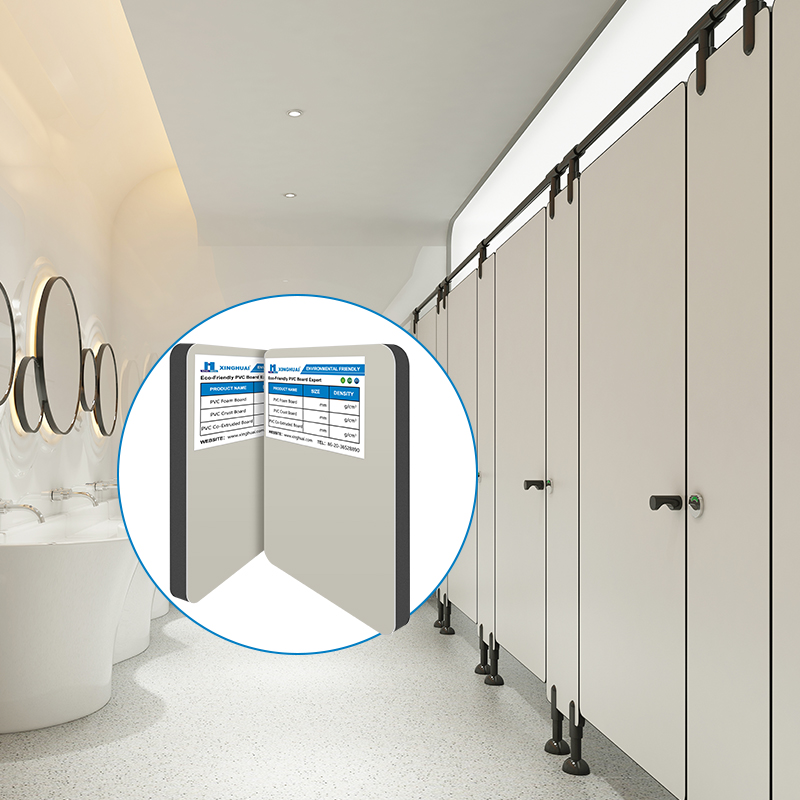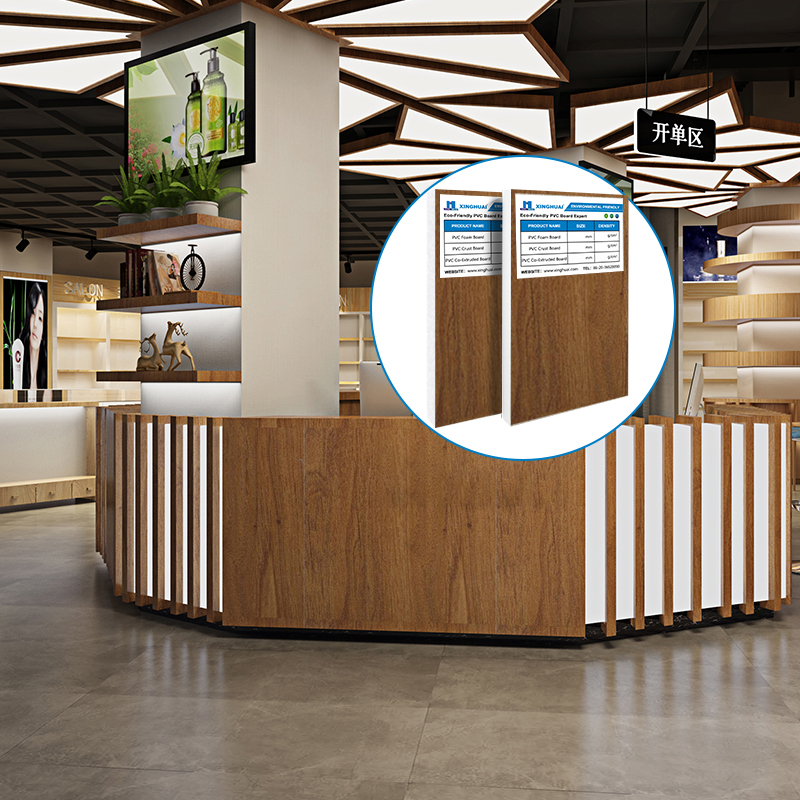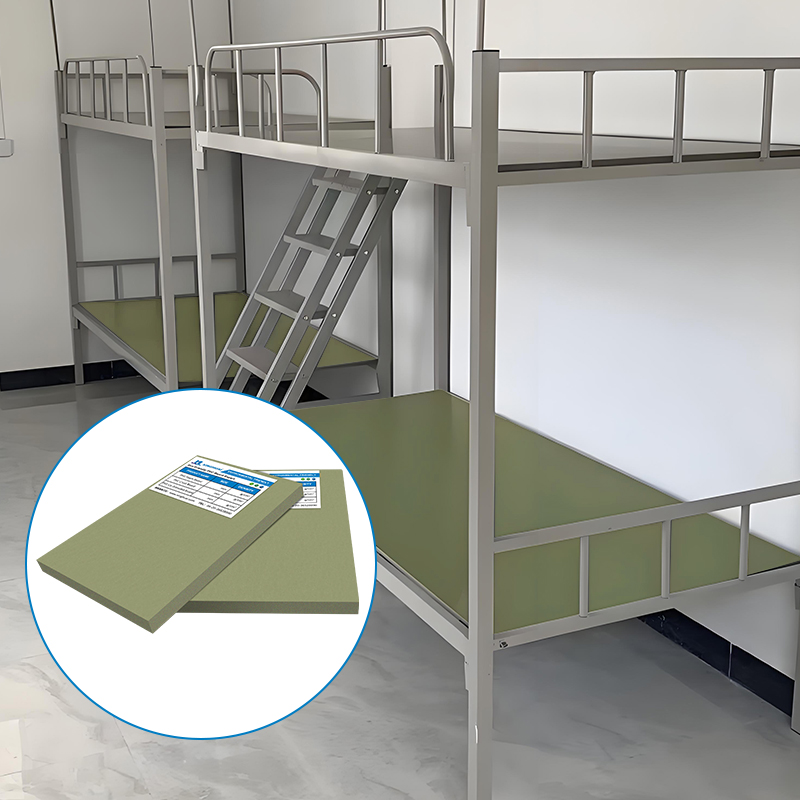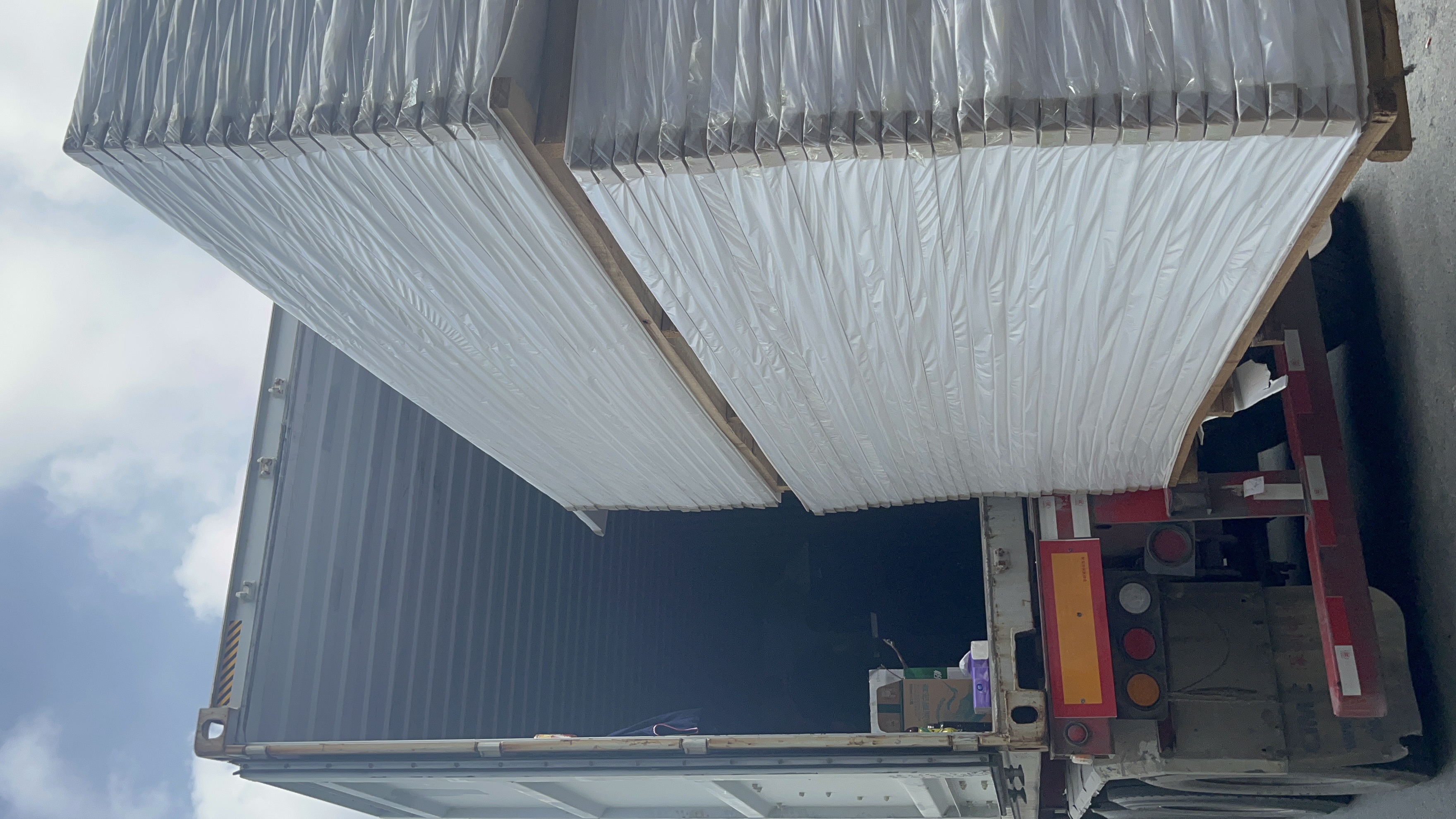Cat Tahan UVPelapis akrilik atau poliuretan meningkatkan ketahanan gores dan retensi warna. Cat piano baking, yang dikeringkan pada suhu 80–120°C, populer untuk papan reklame luar ruangan.Pelapisan Serbuk: Bubuk yang diaplikasikan secara elektrostatis meleleh menjadi lapisan yang tahan lama, ideal untuk aplikasi industri.LaminasiFilm PVC, veneer kayu, atau foil metalik direkatkan ke permukaan menggunakan perekat lelehan panas atau pita perekat yang peka terhadap tekanan. Hal ini menutupi cacat kecil sekaligus menambahkan tekstur (misalnya, serat kayu untuk Dekorasi celuka PVC).c. Ukiran dan Emboss LaserUntuk dekoratif lembaran PVC putih untuk dindingUkiran laser menciptakan pola yang presisi tanpa merusak permukaan yang halus. Rol embossing menambahkan tekstur 3D (misalnya, kulit, batu) sambil mempertahankan kerataan keseluruhan.5.
Kontrol Kualitas: Dari Inspeksi hingga SertifikasiPemeriksaan kualitas yang ketat memastikan kepatuhan terhadap standar internasional (misalnya, ASTM D570 untuk penyerapan air, ISO 4586 untuk kilap permukaan). Metrik utama meliputi:
Kekasaran Permukaan (Ra): Diukur menggunakan profilometer laser atau instrumen stylus kontak. Papan premium menargetkan Ra <0,5 mikron.Tingkat Kilap
: Diukur pada sudut 60° atau 85° menggunakan alat ukur kilap. Hasil akhir dengan kilap tinggi melebihi 80 GU (Satuan Kilap).Konsistensi Warna
: Spektrofotometer mendeteksi nilai ΔE (perbedaan warna) <1,5 di seluruh kelompok.Inspeksi Tepi
:Pemeriksaan visual untuk retakan, lubang jarum, atau ketidakrataan, terutama pada Papan PVC 4x8
digunakan untuk instalasi berskala besar.Relevansi Pasar: Harga Papan Busa PVC di Malaysia
Di pasar yang kompetitif seperti Malaysia, Harga papan busa PVC
dipengaruhi oleh kualitas permukaan. Papan premium dengan lapisan akhir yang sangat halus (Ra <0,5 mikron) dan lapisan mengilap tinggi memiliki harga 20–30% lebih tinggi daripada varian standar. Papan ini lebih disukai untuk interior mewah, lembaran PVC putih untuk dinding
di hotel, dan pajangan ritel kelas atas. Sebaliknya, opsi hemat biaya dengan Ra 1,5–2,0 mikron digunakan untuk papan tanda sementara, bekisting konstruksi, atau area dengan lalu lintas rendah.Itu Lini produksi papan busa PVCEfisiensi—diukur berdasarkan tingkat produksi (ton/jam), konsumsi energi, dan tingkat penolakan cacat—berdampak langsung pada efektivitas biaya. Misalnya, lini produksi 5 ton/jam dengan tingkat cacat 2% dapat menawarkan harga yang lebih rendah daripada lini produksi 3 ton/jam dengan tingkat cacat 5%, meskipun lini produksi tersebut menggunakan material berkualitas lebih tinggi.
KesimpulanKehalusan permukaan
Papan berlapis PVC adalah hasil dari pemilihan material yang cermat, proses ekstrusi yang canggih, dan pasca-pemrosesan yang ketat. Dengan mengoptimalkan formulasi bahan baku, desain cetakan, laju pendinginan, dan teknik penyelesaian akhir, produsen menghasilkan papan yang memenuhi kebutuhan
Dekorasi celuka PVC, lembaran PVC putih untuk dinding
, dan aplikasi bernilai tinggi lainnya. Sebagai
Harga papan P
Persaingan global semakin ketat, dan inovasi dalam teknologi penyelesaian permukaan—seperti ko-ekstrusi, pemolesan laser, dan pelapisan nano—akan tetap menjadi kunci untuk mempertahankan kepemimpinan pasar. Bagi konsumen di Malaysia dan sekitarnya, pilihan antara biaya dan kualitas bergantung pada pemahaman prinsip-prinsip rekayasa yang mendasarinya.: Prevents premature melting and blockages.
Compression Zone (160–180°C): Melts the PVC resin while mixing additives uniformly pvc foam board production line.
Metering Zone (180–200°C): Ensures consistent melt viscosity before entering the die.
Die Zone (190–210°C): Maintains optimal temperature to prevent skin layer defects.
Thermal Stability: Overheating can degrade PVC, causing surface discoloration or brittleness. Underheating leads to incomplete fusion, resulting in pinholes or rough textures.
b. Die Design and Material Flow
The die is the most critical component in determining surface quality. Two primary designs are used:
Flat-Film Die: Used for continuous sheet production, it features adjustable lips to control material flow. A narrow die gap (0.5–2mm) ensures uniform thickness, while a polished chrome surface reduces friction pvc foam board production line.
Co-Extrusion Die: Combines a base layer (cellular core) with a thin, high-density skin layer in a single pass. This method achieves superior smoothness but requires precise synchronization of material feeds.
Flow Simulation: Computational fluid dynamics (CFD) models optimize die geometry to eliminate dead zones where material could stagnate and cause surface defects.
c. Calendering vs. Casting: Two Paths to Smoothness
After extrusion, the molten sheet undergoes one of two processes to finalize its surface:
Calendering: The sheet passes through a series of heated rollers (typically 3–5 rolls) that compress the cellular core beneath a dense skin.
Advantages: High production speed (up to 5m/min), cost-effective for mass manufacturing.
Limitations: Slight surface texture (Ra 0.8–2.0 microns) due to roller marks.
Casting: The melt is poured onto a polished mold (e.g., glass or stainless steel) and cured under controlled conditions.
Advantages: Ultra-smooth finish (Ra <0.5 microns), ideal for PVC celuka decoration and high-gloss applications.
Limitations: Slower production (1–2m/min), higher tooling costs.
3. Closed-Cell Structure Formation: The Science Behind the Skin
The cellular core of PVC foam boards is created by chemical foaming agents that release gas (typically nitrogen or carbon dioxide) during extrusion. The key to surface smoothness is isolating these air pockets within the core, preventing them from breaching the skin layer. This is achieved through:
Nucleating Agents: Fine particles (e.g., talc) promote uniform cell formation, reducing large voids that could distort the surface.
Skin Layer Thickness: A thicker skin (0.3–0.8mm) acts as a barrier, but excessive thickness can increase weight and cost.
Cooling Rate: Rapid cooling (e.g., water baths or air knives) solidifies the skin before gas bubbles escape, locking in a smooth finish.
For 4x8 PVC boards (standard size: 1220×2440mm), consistent cell size distribution ensures dimensional stability (<0.5% moisture absorption) and resistance to warping—critical for wall panels in humid climates like Malaysia.
4. Post-Processing Techniques: Polishing to Perfection
Even with optimal production, minor surface imperfections (e.g., micro-scratches, roller marks) may occur. Post-processing steps include:
a. Mechanical Polishing
Sanding: Progressive sanding with grit sizes from 100 to 2000 removes rough edges and creates a matte or satin finish.
Buffing: High-speed polishing wheels with microfiber pads achieve a mirror-like gloss (Ra <0.1 microns).
b. Coating and Lamination
UV-Resistant Paints: Acrylic or polyurethane coatings enhance scratch resistance and color retention. Piano baking paints, cured at 80–120°C, are popular for outdoor signage.
Powder Coating: Electrostatically applied powder melts into a durable layer, ideal for industrial applications.
Lamination: PVC films, wood veneers, or metallic foils are bonded to the surface using hot-melt adhesives or pressure-sensitive tapes. This masks minor flaws while adding texture (e.g., wood grain for PVC celuka decoration).
c. Laser Engraving and Embossing
For decorative white PVC sheets for wall, laser engraving creates precise patterns without damaging the smooth surface. Embossing rollers add 3D textures (e.g., leather, stone) while maintaining overall flatness.
5. Quality Control: From Inspection to Certification
Strict quality checks ensure compliance with international standards (e.g., ASTM D570 for water absorption, ISO 4586 for surface gloss). Key metrics include:
Surface Roughness (Ra): Measured using laser profilometers or contact stylus instruments. Premium boards target Ra <0.5 microns.
Gloss Level: Measured at 60° or 85° angles using a gloss meter. High-gloss finishes exceed 80 GU (Gloss Units).
Color Consistency: Spectrophotometers detect ΔE (color difference) values <1.5 across batches.
Edge Inspection: Visual checks for cracks, pinholes, or unevenness, particularly in 4x8 PVC boards used for large-scale installations.
Market Relevance: PVC Foam Board Price in Malaysia
In competitive markets like Malaysia, PVC foam board price is influenced by surface quality. Premium boards with ultra-smooth finishes (Ra <0.5 microns) and high-gloss coatings command 20–30% higher prices than standard variants. These are preferred for luxury interiors, white PVC sheets for wall in hotels, and high-end retail displays. Conversely, budget-friendly options with Ra 1.5–2.0 microns are used for temporary signage, construction formwork, or low-traffic areas.
The PVC foam board production line’s efficiency—measured by output rate (tons/hour), energy consumption, and defect rejection rates—directly impacts cost-effectiveness. For example, a line producing 5 tons/hour with a 2% defect rate can offer lower prices than a 3-ton/hour line with 5% defects, even if the latter uses higher-grade materials.
Conclusion
The surface smoothness of PVC skinned boards is a result of meticulous material selection, advanced extrusion processes, and rigorous post-processing. By optimizing raw material formulations, die designs, cooling rates, and finishing techniques, manufacturers produce boards that meet the demands of PVC celuka decoration, white PVC sheets for wall, and other high-value applications. As P board price competition intensifies globally, innovation in surface finishing technologies—such as co-extrusion, laser polishing, and nano-coatings—will remain pivotal to sustaining market leadership. For consumers in Malaysia and beyond, the choice between cost and quality hinges on understanding these underlying engineering principles.





